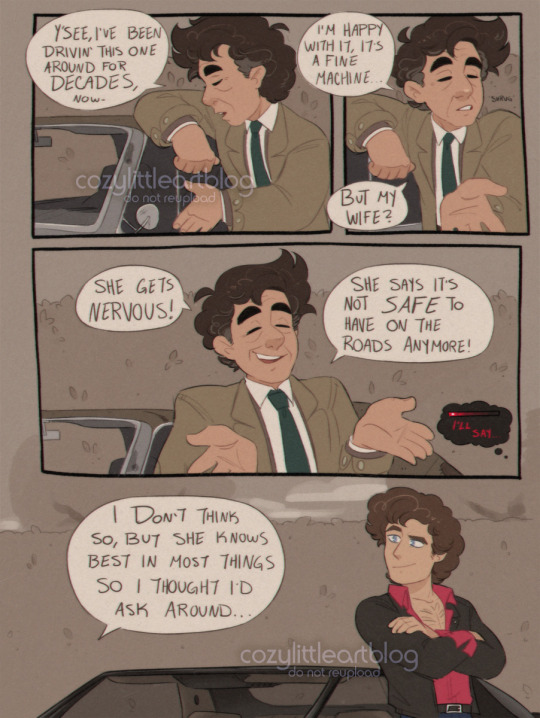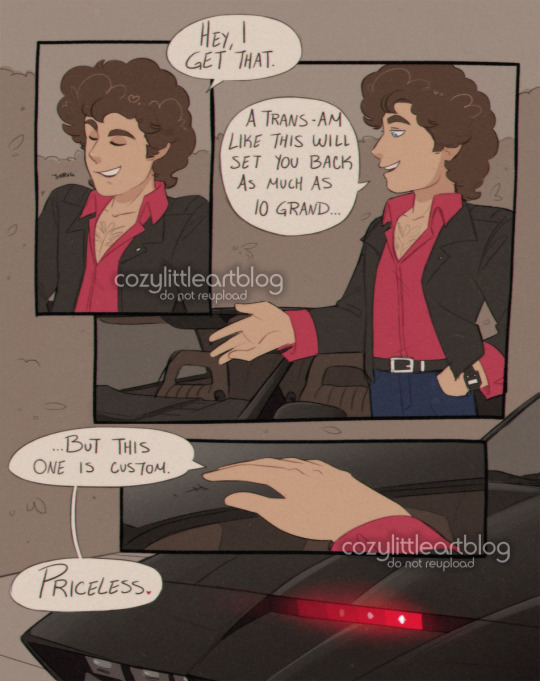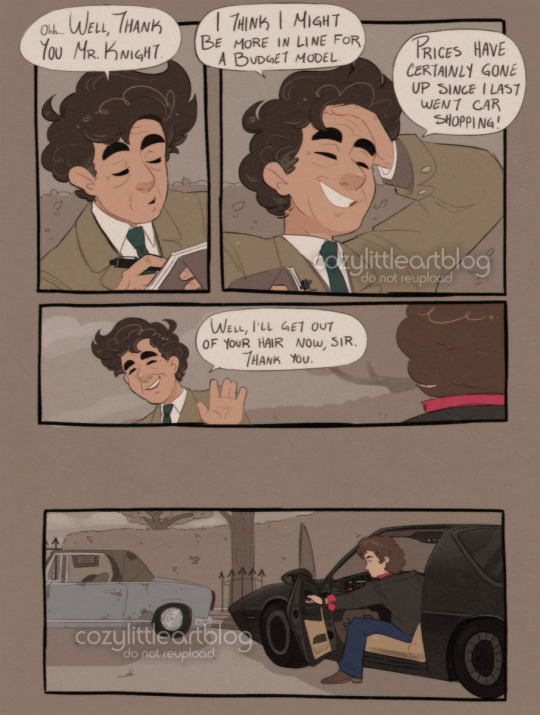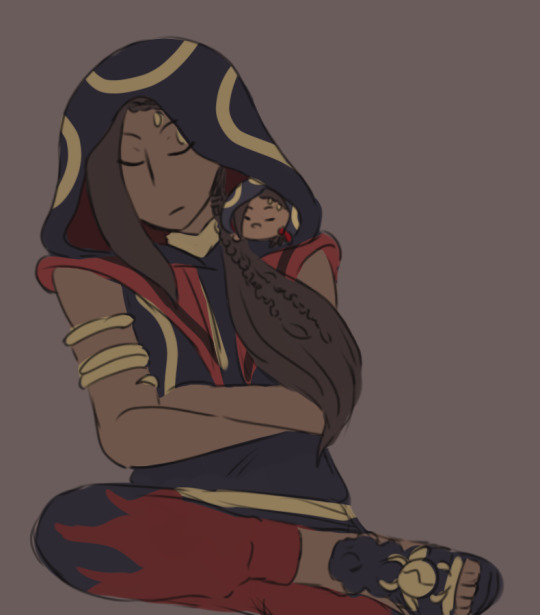#march week 3
Explore tagged Tumblr posts
Text
March Week 3 - Traditions, Associations, Tools and Symbols
This week we will have several new pages. One for a personal look at your practice given the above prompts, one for a family/ ancestral look at the prompts, and one for your community, no matter how big that community is. Whether that is just you and your immediate friends, or something wider like a coven or group you regularly talk to your about your practice.
This will be another week with a lot of stuff in the prompts!
Monday - Traditions
First lets define tradition.
noun: tradition
the transmission of customs or beliefs from generation to generation, or the fact of being passed on in this way.
a long-established custom or belief that has been passed on from one generation to another.
an artistic or literary method or style established by an artist, writer, or movement, and subsequently followed by others.
a doctrine believed to have divine authority though not in the scriptures.
Personal page - Take a look inward at yourself and your traditions, inside and outside of your witchcraft practice. What things do you do regularly, to keep your life and your habits on track? Your practice? How do you celebrate things both large and small? What are the traditions you hold personally in your life?
Family/ Ancestor page - Ask your family about these, beyond the ones you know. What are some of your family traditions? How does your family celebrate certain things, large and small? What meals are traditional to your family? Are there any prayers or actions of any kind that are passed down? Look deep and ask about your family further back than just the ones you've met.
Community page - Look at your community at large. Friend groups, a coven or other people who practice like you or with you, and the community you live in. What are some traditions that are held and passed down through generations within that larger community? Everything from celebrations to regularly held events and so on! How does it all relate to your practice or how has it become a part of it?
Tuesday -Associations/ Symbols
Personal page - What are some things you personally associate with yourself and your craft? Everything from foods, to plants, gems, animals, everything you associate with any part of your identity.
Family/ Ancestor page - What are some things from the list above that you associate with your family and your ancestors?
Community page - Same goes for your community. What associations do you hold for your community? We all feel a certain kind of way, and think about certain things when we think about our hometowns or the area in which we live. An example, I live in Ohio, so not so jokingly, there's a lot of corn here, a lot of farmland. That's something I associate with my community.
Wednesday - Tools
Personal page - What are some of the tools you personally use in your craft? It can be anything at all. An example from my practice is a small tin i keep on my altar, decorated with paint and symbols that I use as a sort of money offering tin. I put money in it regularly when I practice at my altar and use it to buy new things for my altar. Another is a round cylindrical tin I use to hold the small pages I've written my devotional poetry on. Anything that is specific to you and your practice.
Family/ Ancestor page - Same kind of deal as above, but on a broader scale, focused on your family and ancestry. What are some of the tools your family uses (both in and out of the traditions you've learned about). An example is my grandmother's piano. We use it as a focal point for a great many things. We come together at it to sing songs that remind us of our family.
Community page - Again, like the above, but focused on your community. A local fountain, or park, or place, a thing people in your community use for some sort of reason. There is a local park with a fountain that holds an important place in our community.
Thursday - A Little Treat
So for today, we're gonna have a bit of an offshoot. We're gonna get in the kitchen and cook! You don't have to do this one, but there's been a lot of stuff for the prompts this week, so let's treat ourselves while adding to our grimoires! Find some recipes!
Personal page - What's a recipe that you came up with on your own, pertaining to or not pertaining to your practice? If there is a certain food you like to cook before/ after spells or rituals, record it on your personal page. Then, go cook it! And enjoy!
Family/ Ancestor page - Ask your family if you want, and discover the recipe for something that has been passed down in your family. I will forever swear by my grandmother's potato soup recipe. Record it on this page, then make it!
Community page - Is there a local favorite spot? Is there a restaurant or place locally that you could visit and eat at? Or is there some sort of cuisine that is made locally and not really anywhere else? Record it if its something you can cook, and make it! If it is a place to visit, go there! And enjoy!
Friday - Back to the norm
Let's finish off the week with our regular research prompts!
New Page/ Research - Herbal research- Pick another herb from your list and learn all you can about it! Record it on a new page!
New Page/ Research - Gemstone/ other - Pick another gemstone or type of magic or tool, make a page or add the info to an existing page!
Whew! That was a lot! Feel free to share your recipes or pictures of what you cook, either by submissions on this page or by tagging me either here or at @thehazeldruid and I'll share what you've made!
Good luck and happy crafting witches!!
-Mod Hazel
#2024 grimoire challenge#grimoire#grimoire challenge#paganism#witchcraft#witchblr#book of shadows#2024 gc#dark academia#occultism#2024 grimoire challenge march#march week 3#2024 gc march week 3#grimoire stuff#grimspiration#grimoire inpsiration#witchy#witchcraft inspo#witchy challenge
64 notes
·
View notes
Text





Columbo and the Knight (1984)
put me in the universe where Columbo ran through the 1980s and had a crossover episode with Knight Rider. I think they deserved it, and I am not just saying that because they're my two favorite Old Shows. @telebeast wrote a little fanfic blurb about it and I HAD to visualize it into a comic (which is also the longest comic I have finished thus far at five pages...), so writing credit goes to them.
Autism W!
#columbo#knight rider#art#michael knight#kitt#comic#highlight reel#crossover#telebeast#there are two small easter eggs here. can you find them. they were somehow not Entirely lost when i resized these for the public#this is what i mean when i say I Draw And It's Everyone Else's Problem. look at my INCREDIBLY niche crossover comic boy#if the knight rider fandom has like 12 people in it. how many of y'all have seen columbo#this comic is for like 4 people and me and phoenix are already two of them#niche is my specialty lets be real. weird niche obscure shit and ships nobody's paid attention to yet#not to suggest this is ship art. columbo has his wife and michael has his car lmfao#stylizing real people is EXTREMELY hard btw sorry for when they get off model. its partly a 'better imperfect than never finished' situatio#cant tell you how much i redrew some of these panels. weeps#this took me 2 weeks but i think i thumbnailed it all in may and the ideas been rollin around in my head since march#is anybody good at editing. please edit michael and columbo into an image together like its a screenshot. NOT generated. edited.#it would be so cool#ive drawn columbo a lot but i haven't drawn a lot of michaels. i was learning things about his outfit AS I WAS DOING THE DAMN#COLORS ON THIS. all the lines done. it was too late to change anything. i did all the lines and colored page by page#i realized my mistakes on like page 3. 1 and 2 were already done. it was Too Late.#imagine it though. them working a case together. switching between the more serious tone of columbo vs the goofier#action antics of michael and kitt. columbo being so impressed by Modern Technology. there's more i could say but phoenix may write#more of this crossover and i don't want to spoil it :'3#there's opportunity here though i swear. there's gold to be dug.#i like how kitt gets shading but columbo's junker peugeot doesn't. kitt looked wrong without any. columbo's car is matte and dirty#i also applied effects to this to make it look a little film-grainy and VHS like. some CRT TV vibes#the only question left is. did they put knight rider into columbo; or columbo into knight rider 🤔
3K notes
·
View notes
Text

reunion 🌸
#persona 3#persona 3 spoilers#minato arisato#makoto yuki#ryoji mochizuki#aigis#ryomina#lizzy does art#HELLO EVERYONE!!! march 5th is upon us again so i bring... my contribution for this year. my third year drawing for it!#i made the thumbnail for this a few weeks after last year's graduation day#i thought it would be fun to lean into the ryominaigis angle of graduation day (you could read this as minato/aigis if you like-#but i feel like most people would read it as ryoji/minato)#IN ANY CASE working on this made me very emotional over this game :') (specifically minato)#i really enjoy how p3 ends it's such a nice way of wrapping up the narrative's messages and themes#working on this. minato's kindness was at the forefront of my mind throughout the piece#and i really wanted to capture how. ultimately it was his decision to sacrifice himself- to do the great seal#while to an outsider's perspective it is. sad that minato passes. i think becoming the seal is something that minato-#actively welcomes. in the same way that death (ryoji) is a comfort to him because death was housed in him for Ten YearsTM#AND I ALSO GOT REALLY SAD OVER AIGIS TOO. i still get fucked up over how in fes's animated cutscene for 3/5 they portray-#her as human and not drawing the robot parts so i wanted to do something smilar here...#but also i am very sad on aigis's behalf because she discovers her humanity through minato and realizes what she-#wants to do and then. well. minato is like. he's ready to pass on (even if he's scared) and im like. OH MY GOD THIS TRIO GETS ME MESSED UP#this was more coherent in my head LOL BUT ough i like drawing p3 and working through my feelings about it...#anyway! happy (in quotations) march 5th. i love this game to bits. it's so fun to draw for this day every year and see how i've improved#if you've read all this thank you :) lizzy appreciates you all very much. mwah! <3
2K notes
·
View notes
Text

wanted to make a render to get back into the hang of things
#no sim in it because i really didn't want to open the game 😭#i recorded myself making this and made a speed render#but i've gotten an error all 3 times i've tried to upload it so when i figure that out i'll post it in a reblog#but it's 2am and i'm wrecked lol#anyways hi its been a month#sorry i've been so absent#having one of those weeks where the smallest things either have me in tears or a fit of rage#and these kind of weeks have been coming consecutively since like.. march 💀#feel like shit but nothing to do besides get over it and move on#here's hoping it passes 🤞#goodnight friends#edits
466 notes
·
View notes
Text

There's no need for concern. While I am not aware of Majima-san answering any submissions, he did have permission to engage with the suggestion box. I requested that he empty the box and prepare submissions for review while I was away on business in Yokohama, to which he eventually relented agreed.

Ideally, I would have asked Kashiwagi-san, but these are the circumstances we must work under.

I do think that is something that we could potentially provide; there is already one such location I can think of, but I would have to discuss further with Majima-san to arrange this once things settle. Unfortunately, this will have to be shelved for another day.


#mine yoshitaka#majima goro#kiryu kazuma#rgg#yakuza 3#one more week before im free from my job god bless#can actually sit down and devote time to this blog again#bring a close to forever march
381 notes
·
View notes
Text
eepy eepy

#a not-so unanticipated sequel to my jamil tsum post back in the beginning of march#which felt like forever ago????#this is still technically relevant bc the tsum event is still ongoing on the jp server#THIS IS THE LAST TSUM POST I SWEAR#I'M OVER THEM (i'm not)#[—✦-#-✧ my art#twst art#twst#twisted wonderland#jamili viper#twisted tsumderland#tsumsted wonderland#-✦—]#i’ve had this doodle sitting in the drafts for like a week now ngl#i’m v tired my brain refuses to let me draw anything past the sketch phase 😔#see yall in 2-3 ish days when i’m done with finals hell 🫡
312 notes
·
View notes
Text



Last Flora Friday of the year!! I was a little worried at first, because I only realised that yesterday, and I didn't have time for anything special, but then I remembered I still had this comic lying around in wait for a special occasion!
So Happy Flora Friday, and fingers crossed that 2025 turns out very Flora-filled!
#god i actuallly made this in *march* and the completely forgot about it until 3 weeks ago#I cant remember why i didnt post it when i made it but i think it kinda slaps#And it touches on some stuff that'sbeen on my mind recently#professor layton#flora reinhold#flora friday#curious village spoilers#cw blood#art#fanart#whiskers draws#also someone let me know if i need tocw this any more?
72 notes
·
View notes
Text

The farmer visits the blacksmith~








In the end, Aris didn't hear anything Valen said and quietly left the clinic, walking happily~
#fields of mistria#fields of mistria march#I've spent 3 weeks drawing this and my hands hurt so bad-#comic
65 notes
·
View notes
Text









Band Aid, which literally is a combination of "band" and "aid" meaning help, shows us where they're aiming for - after the return of the group with their last album. This is a pledge to comfort the band that sings youth, and a declaration to be around the listeners in a more energetic way to match the identity of a band. In the name of the band, they would heal. Be the Band-Aid to stroke the wound.
BAND AID (DAY6) Released September 2, 2024
#day6#young k#sungjin#wonpil#dowoon#happy almost 3 weeks of band aid!!!! this album and song is breaking records that we had always dreamed of <3#idk what this is anymore akjhfksdjad#i was contemplating on whether to add my fave lyrics from each song on the gifs... but then it would be too much text....#anyways the little description for each song and the album description in the caption is from the platform ver of the album on the nemoz ap#i actually wanted to do something similar for their fourever album when it was released in march.... but then laziness got the better of me#asakfjkdjkas so here is the band aid ver instead#*
113 notes
·
View notes
Text
Important news:



them
#>> mod: firefly#{ important }#check tags#earthspark#transformers earthspark#tfe#transformers#tf earthspark#tfes#maccadam#earthspark bumblebee#earthspark optimus#earthspark megatron#tfe bumblebee#tfe optimus#tfe megatron#partially an april fools post and partially real news because yes these do actually exist!!#found in germany by a tfw2005 user#link: https://news.tfw2005.com/2024/03/25/tfw2005-weekly-international-sightings-round-up-march-week-3-2024-507198#they look awful. i love them#happy april fool's day! <3
166 notes
·
View notes
Text



Very glad my team gets the option to work from home for quarter-end week 😌☕🥐
#ore no kao#especially with an 8:30 3-hour meeting i almost went into the office for since i wanted my second gym day for the week#but seeing a friend last night--really fun/hot (still loving how he loved my ass and how i was blowing his cock 😌😌😌)--ran way late lol#[we grabbed drinks nearby then brought him to my place as it was pouring so that was a nice excuse to remove shirts lol#but ugh between his chest hair his eyes his lips his dick his ass his being a bit taller than me... what was i adding here again]#[he works at a museum and gets freebies sometimes so we did talk about seeing one nearby sometime and we got on really well over drinks too#[had met him at the queer liberation march last year and we stayed in touch some on IG but we saw each other on a site and he hit me up]#[i still have his umbrella since my roomie was in the bathroom with it as he was leaving so that's incentive for next time haha]#anyway should probably try to get some work done 🥱
71 notes
·
View notes
Text

Just found out that Emi posted a pic of Firstkhao before during last years Valentine event.
Maybe they do know each other after all? 😂
#this honestly made my dayyy or even my week#i am surprised i didnt see it earlier but its probably because she was still pretty new at gmmtv back then and not many ppl followed her#and i remember i fell in love with her in march when i started watching beauty newbie so just a bit after this happened#and of course i didn't really look back on her past tweets#this means so much to me because these three are like my fave 3 <3#she liked one of my tweets before where i mentioned first khao and her .. i don't wanna be greedy but i hope it can happen one day <3#firstkhao#first kanaphan#khaotung thanawat#emi thasorn
23 notes
·
View notes
Text
tell me something, anything, for me to read whenever I take little breaks from my studies. go wild in the notes!
#valid until feb-march :3#<- i say valid like this is some free trial or whatever LMAO#but hello!!! it feels like its been awhile even tho its only been 2 weeks#i am still unfortunately on a break from tumblr </3 but I thought it was time for one of these posts#also when I say anything I mean Anything. be it an update on your life or a ramble abt a hyperfix#i WILL read it and WILL be interested!!! <- said like a threat in a pos way#GRAH. i miss my friends tails /ref#yelling#the mutuals tag
25 notes
·
View notes
Text
Make your predictions now before the marketing cycle begins:
#for reference DRS2P1 aired on April 4th#so March 28th to April 10th makes the most sense#but I could totally see a couple weeks earlier or later#ninjago#ninjago dragons rising#ninjago dr s3#ninjago dragons rising season 3#dragons rising season 3#dr s3p1
29 notes
·
View notes
Text
🎨 Colour Theory, part 1: Horizon Line [oneshot]
(formerly known as "Perspective")
shimura tenko × poc friendly f!reader ft. todoroki touya.
-> safe for work // 4.8k words // AO3 // part 2. -> warnings: jealousy + some actions may be considered creepy. low self-esteem, shyness, a couple of very brief musical references, family member death mention.
summary: tenko goes to art school and gets a little crush on a musical theater major.

×X×
Horizon Line -- an actual or imaginary line in a work of art representing the point at which water or land seems to end and the sky begins.
×X×
Tenko had fallen asleep before the performance had even started.
He had long lost track of how long he'd been awake for. It was the end of his second semester in university and the prestigious art program he was in made sure to keep him busy with project after project. He was running out of steam. Honestly, he had been running on fumes for weeks now.
He'd rather be in his dorm finishing his assignments instead of sitting in one of the theaters in the performing arts building. If it wasn't a requirement for Fine Arts majors to attend other Fine Arts events, he would have never set foot in this place. The noise of the attendees filling the room and the orchestra tuning their instruments in the pit was grating his sleep deprived nerves.
He grumbled and crossed his arms as someone took the seat beside him, his leg bouncing as he grabbed the program the usher had handed to him when he first entered. Tenko's bloodshot eyes were barely able to process anything more than The Phantom of the Opera on the front of the flimsy pamphlet, before shutting it and glaring at the scarlet curtains on the stage.
A few minutes later, the lights began to dim and he sighed in relief as the room quieted. He could finally catch some much needed sleep. He tried stretching his stiff legs in an attempt to loosen himself up and closed his eyes.
Only to open them at the sound of your voice singing to him on the stage.
"Think of me, think of me fondly when we've said goodbye. Remember me, once in a while, please, promise me you'll try."
Tenko was mesmerized. Watching you on stage woke him up more than the energy drinks he'd been living off of all semester. He was absolutely immersed with your performance. He soaked in your every word and movement and before he knew it, two hours had gone by and the cast was being applauded as they bowed.
He sat in awe for a moment as the auditorium lights flicked on and he stood, shuffling through the crowd. He found a nice corner of the lobby behind a pillar as he and some other audience members waited. He skimmed through the program and found you. He whispered your name like a secret only he could ever know.
The cast slowly came out one by one and thanked the guests for coming. Tenko's eyes darted around impatiently. Finally, out came you in the white gown you wore in your final scene, looking like an angel that had come down to offer his sin-filled existence some respite.
You greeted and thanked the attendees as they praised you and handed you flowers. It was the final night of your musical and you were beaming. Tenko's fingers fidgeted at his sides as he yearned to get closer to you and experience your radiance himself.
A guest bowed and left, leaving an opening for him to approach. He took a step out from behind the pillar, but you turned at the sound of your voice coming from behind you. Tenko recognized the person as the man who played the Phantom and sighed when he saw you turn and leave the room.
When Tenko returned to his dorm, he searched your name online and found your social media. His night was spent watching your videos. He didn't realize how much time had passed until his alarm went off and he saw the sunlight peaking out from behind onyx curtains. It was time for him to get ready for class.
The semester had finished with him acing art and barely passing his core courses. It was winter break and with most students away, the campus was deserted. The thought of having no one to go home to didn't even cross his mind as he spent the break filling his sketchbooks with your image.
His second semester started off much better than the first one. His art had rapidly improved from how much he'd been practicing recently.
He found a spot he liked. It was a small outdoor table nestled between some trees on the southern campus dormitory area. The weather on this side of the country wasn't as cold as other prefectures would be in January, but there was still the occasional breeze that made his dry skin prickle up with goosebumps. It was the rain that was more likely to get him sick, although, since he was under the wide umbrella of the table, he found that unlikely and continued his sketch of you.
A week and a half later, he gulped down the last of his cold medication and slammed the container down in frustration. He leered at the harrowed reflection staring back at him on the dirty bathroom mirror. His eyes were heavy with deep bags, his skin a sickly colour, and his black hair hadn't been brushed in 2 or 3 days. He let out a sigh.
×X×
He found another spot he liked, safe from the chilling late January rain. It was in the performing arts building, in a seating area by the entrance. The art program may have been the school's top program, but the grand architecture and romantic interior design of the performing arts building clearly showed it also wasn't anything to scoff at, despite being was a few stories shorter than the building across the quad that Tenko was more familiar with. It was much noisier here, too.
Tenko had his earbuds in as he slouched on the upholstered chair, sketching, when he noticed a familiar form in the corner of his eye.
It was someone he recognized as your frequent scene partner that you seemed to be joined at the hip with, if your social media was anything to go by. Tenko felt a spark of excitement bubbling inside of him and he looked around hoping to see you, but your face was not among the crowd of students. His hope deflated to disappointment and he scratched the side of his neck. You were likely already in class.
It was ten minutes into the hour when Tenko decided to leave. He gathered his things and carried his sketchbook in his arms as he stood and walked away from the seating area.
He tripped over his feet and bumped into someone, his sketchbook flying out of his grasp.
"Oh no, I'm so sorry!!"
It was you.
Your sweet voice was full of apology as you bent down to grab his sketchbook for him. He watched in awe at how swiftly you moved. He was at a loss for words. Your fingers froze over the edge and Tenko realized what page it had landed open on.
"Is that... me?"
Your voice sounded so pretty, even when you were confused. He felt his face burning as you grabbed the sketchbook and stood. Your eyes stared down at the sketch of you he had just done while in the seating area, when he was itching to catch a glimpse of the top of your head through the crowd.
You were so close now and it was going to kill him.
"This is from my Jekyll and Hyde audition in Spring 2220, right? Back when I was trying to get the role of Lisa. I can't believe it's already been three years since then..."
You were so close now and he knew you'd think he was a creep for watching your old videos and bumping into you. You probably thought he had it all planned out, like some sort of stalker.
"Is it okay if I flip through..?"
His brain was screaming at him to say 'no, give it back' but his head nodded, unable to deny you of anything you wanted from him. Yes, there were sketches of you without any clothes on and he was well aware of how that would look, but he couldn't find it in himself to care. He would rip out his heart for you to use as a hand warmer, if you asked.
He watched with a gut wrenching mix of horror and delight as you flipped through and took your time to study every page. Drawing had always come easily for him, with hands being his favourite body part to draw. Expressions were a bit more difficult for him to feel satisfied by so he preferred to leave faces blank or smudged out. With you, he actually put in the effort to capture your expressions.
He could see your eyes carefully observe every stroke he had made and take in the details. The furrow in your brow as you focused had him contemplating whether or not he wanted to reach his hand over to your face and smooth it out or leave it perfect the way it was.
You hand him the sketchbook and he snaps out of his thoughts.
"Huh?" He had been too in his head to hear what you had said.
"Thank you, I've never had someone draw me before. It feels really nice." You say with a soft laugh.
The sound made his skin itch and the tips of his fingers tingle with electricity. He clutched his sketchbook tight enough to pale his knuckles. His nails dug into the material as he barely remembers to stop staring and nod as you offer him praise and he feels dizzy. You were so nice. Why were you so nice? To him? He wanted to speak but he couldn't decide on what to say.
"I gotta go. I'm super late to practice and my partner's going to be on my ass about it." You sighed. You wave goodbye and disappear down the hallway.
He was also a bit late to class. His figure drawing professor shot him a judgmental look as he entered the room. Tenko couldn't bring himself to care.
You knew he existed.
×X×
The weather was nice and Tenko was sketching at the outdoor table, when someone sat across from him. He looked up and saw you with an ice cream cone.
"I knew you looked familiar! You're the person that's always out here working on something."
He felt his face heating up as you took a lick of your ice cream. You were so forward. He didn't expect you to approach him again. He had chalked the positive end of your last conversation up to politeness.
"I guess you've been drawing this whole time, huh? Mystery solved. Also explains why you're so good at drawing."
"Thanks to your performances," Tenko says without thinking. He immediately panics at how creepy he sounded.
"Oh, is that why you draw me? I thought it was the outfits since the costume department goes all out. Huh, interesting."
You continue licking your ice cream while watching him and he has to look away. He felt so shy in your presence. He didn't feel worthy of your attention. You were so soft, so pretty, so talented and he was just a creep with a crush that couldn't stop himself from sketching you constantly.
He looks down at his hands as he stumbles through his nerves when he explains how watching you had helped him with movement, making his art more fluid and dynamic. When he finishes, he looks up and sees you smiling at him. The sight made his breathing hitch and he rasped out a small, "What..?"
Were you making fun of him? Is that what this was? Were you actually just here to--
"I could do some reference work for you, if you'd like?"
His eyes widened and he could feel his face heating, the corners of his lips tugging. He didn't know how to speak without making a fool of himself and he was thankful you kept talking. He was happy to sit quietly and watch you.
"We could schedule private sessions, that way it can be just the two of us without anyone interrupting."
"What?" Questioned a third, deeper voice.
The two of you look up and see your partner staring down at you while holding an ice cream cone of his own. "What kinda weird shit you getting into now?"
Your brows furrowed. "Hm? What do you mean?"
"Your wording sucks."
You took a moment to think about it and became flustered. "I didn't mean anything strange," you assured Tenko.
"Sure, pervert."
"Anyways, this is my new friend, uh..." you look over at him sheepishly, "Sorry, what's your name?"
"Shimura Tenko..." His fingers fiddle with the corner of his paper.
"Can I call you Tenko? Or is that too familiar?"
Tenko's face heated up, "Th-That's fine..."
You nod enthusiastically before looking back up at your partner. "This is my new friend Tenko. They're the artist I was telling you about!"
"Oh, so you're the creep who draws her naked."
"I-It's art..!" You defended.
"S'weird, but whatever." The man seemed bored as he licked his ice cream and took a seat in the chair beside her. "Todoroki Touya. She's like a leech so you're stuck with her now. My condolences."
You nod as you take a lick of your ice cream, "We are now bonded for life."
Tenko awkwardly looks between the two of them, unsure of what to say. The two performers end up in a conversation and he can tell you were trying to include him so that he didn't feel left out. After some bickering, Touya takes a bite out of your ice cream.
"How can you just bite it like that!? Doesn't it hurt your teeth!?"
He shrugs, "The cold never bothered me."
You hum a song from a children's movie as you pull out your phone and hand it to Tenko, asking him to insert his Line I.D. because you want to friend him. He looks between you and Touya, crimson eyes glancing at the arm the other man was lazily resting on the back of your chair.
"Is that okay..?"
You tilt your head in confusion, reminding him of a puppy. "Why wouldn't it be?"
Tenko looks from your kind eyes over to the man beside you whose turquoise pair that seemed to be blazing with fire. Tenko blinks and Touya's now impassive expression. Perhaps the dark look directed towards him was simply his mind playing tricks on him.
He typed in his username and you send him a friend request as soon as the phone is returned to you. You angle the phone above your head to take a selfie. Touya shoves his head into the frame, lazily sticking his pierced tongue out as he photobombed.
You notice the time and stand up in a hurry. "I still have that history paper due tonight and I haven't even started it yet! Bye guys!" You run off towards the student housing that happened to be across from the outdoor table, swiping your student I.D.
Tenko watched as you disappeared into the building before looking over at Touya who still sat at the table, only to find that the man was already staring at him. Tension thickened the air like smoke from a fire that made him feel almost suffocated. He opened his mouth to speak, but Touya merely scoffed at him. He finished his ice cream in a single bite and left. He watched as Touya swiped his student I.D., shooting the timid Tenko a cocky grin as he entered the same building as you.
Before he could think much of it, Tenko felt his phone vibrate and unlocked it to see you had sent him your class schedule so that you two could plan a time to meet up. He eagerly studied the photo and you sent him another photo. It was the selfie you took before you left.
"It was nice seeing you again, Tenko! Let's set up a day to hang out!! Here's a photo in case you forget who I am."
He could feel the heat rising from his neck to his ears.
You were too cute.
He could never forget you.
×X×
Over the next 3 weeks, Tenko lost track of the amount of times the two of you had hung out. Sometimes for drawing references, sometimes to eat at the dining hall, sometimes just for the hell of it. Your schedule was busier than his, so he was appreciative of the fact that you went out of your way to be with him. Especially on today, of all days.
You and Tenko sat on the floor, your backs against the mirror of the small practice room as he clutched the bag of chocolate cookies you had given him.
They were homemade, you said. You had baked them on your dorm floor's shared kitchen. They were in the shape of hearts, flowers, and there was even a bunny shaped. He didn't think he would ever forget the ache in his chest when you told him he reminded you of a bunny. The cookies had pink and red icing made with natural ingredients, which was why the palms of your hands were stained red from the beet juice. He licked his dry lips at the thought of you working hard. Just for him, too, because apparently Touya was a picky eater so you simply bought blue food colouring to use on his cookies. He swallowed anxiously as you continued speaking.
"I was hoping that maybe I'd get chocolates today."
"Isn't Valentine's Day when the girl gives the guy the chocolate..?"
You nod, "The norm is that girls give chocolates to guys on Valentine's Day then on White Day the guy can give the girl chocolates in response, but you never know! Girls can give girls chocolates, too. It happened to a friend of mine in high school, though it was the guy version of that. Anyways, why do Valentine's Day and White Day have to be gender specific? Just show the person you care about that you were thinking of them."
You sighed before continuing, "I've never gotten chocolates before. I know, it's kind of silly to whine about this, but I'm a bit of a hopeless romantic so can you blame me?" You laugh softly to yourself. "If Touya was here, he'd say yes and that it's my fault. He's always teasing me about these kinds of things." Tenko watches as you purse your lips deep in thought.
Tenko chewed his lip before quietly asking, "And Touya..? Won't he give you any on White Day?"
"Maybe, but it'll be different." You pull up your knees and hug them.
Your thighs were distracting and he struggled to keep his eyes off of them.
"The cookies I gave to Touya were obligatory chocolates, not the 'real feeling' kind you would give to someone you like. Last year, I gave Touya obligatory chocolates and he started complaining because he had already received too many sweets. I was so jealous. At least I managed to convince him to give me his chocolate."
Though he enjoyed snacks, Tenko didn't really care for the holiday. He never really had a reason to... until now.
"Tenko, have you ever gotten chocolates? I mean, other than the ones I just gave you?"
"No."
"So, I'm your first?"
He nodded, moving his head to stare down at the sketch in his lap. His fingers fiddled with the corner of the page, crumpling it more and more until it became limp from wrinkling. He had always found destroying things to be quite soothing for him.
"I..." Tenko was hesitant but decided if you were going to reject him, it was better if you did it sooner rather than later. "I used to live in an orphanage..."
In the corner of his eye, he can see you moving your head quickly to look at him. He tried to swallow his nerves as he continued speaking.
"My family died in an accident when I was five. I was sent to live with a distant relative since there was no one else and the situation was not... ideal. The kids at my new school picked up on my gloominess and shunned me. Even when my great uncle died, my presence would be deemed too unsettling to anyone that tried getting to know me."
He was too afraid to turn his head to look at you so he continued fiddling with the page, ruining more and more of it. You place your hand over his, calming the destruction.
"I used to live in an orphanage, too."
Tenko's eyes widened and he looked at you. "Are you... lying?" He whispered.
"My parents died in an accident when I was little. Wrong place, wrong time. I had no other family in Japan, so I got placed in a children's home."
His eyes scanned your face, looking for any sign of this being a trick but he could tell from the warm sincerity in your eyes that you were telling him the truth. "I don't know what to say."
You smile softly at him, "You don't have to say anything."
The feeling of your thumb rubbing circles against his thumb made Tenko's heart tremble. He wanted to swim in this feeling, to drown in your touch.
He watched your eyes glance down from his dark eyes to his lips, his breathing hitching in anticipation as you leaned in slowly to--
The practice room door opened, making the two of you flinch. Tenko missed the feeling of your hand as you leaned back and glared at the intruder.
"I thought I told you to knock before opening doors. You scared me." You folded your arms against your chest.
"I guess I won't give you my chocolates," Touya taunted as he walked over to you. He dropped his bag at the side of you Tenko wasn't on, making a loud 'thump' as it hit the wood floor.
"Chocolate!!"
Touya smirked as you opened it and pulled out a heart shaped cookie with the kanji for love written in icing.
"Whatever, eat later. We've got rehearsal."
You look up at Touya while stuffing your face before looking over at Tenko, then back at your partner. "Already? It's not for another twenty minutes."
Touya rolled his eyes and grabbed the bag before you could reach in for more sweets. "Early is on time, on time is late."
"Hey, that's what I tell you! Don't use those words against me, they sound weird coming from your mouth." You wipe your hands against a handkerchief before moving to stand up. "By that logic, you're always late."
Touya moved towards the door, beckoning you closer with the bag, "Here, doggy."
"Doggy..!?"
"If you spin around and bark I'll give you a treat."
The two of you could hear him laughing as he walked out of the room with the bag.
You pout, "That Touya... doesn't he know dogs can't eat chocolates?" You shake your head and Tenko stands, pulling his backpack on. "I guess I'll... see you later then?"
It felt kind of awkward now, but Tenko didn't mind that much. He only wished that your time together wasn't cut so short.
"Yeah..."
"Can't wait." You grin and walk out of the dance practice room together. You wave as you go down the opposite side of the hall to catch up with Touya. In the distance Tenko can hear you woof.
As Tenko exited the performing arts building, he felt his phone vibrate. He opened it and saw a selfie of you with chocolate smeared on the side of your face, while trying to shove Touya's face out of the frame and seemingly getting the chocolate on his face in the process.
He grinned. He also couldn't wait to see you again.
×X×
"Chocolate? For me?" You gaped at the small bag of chocolates.
Tenko nodded, his eyes shyly peering up at you as you grabbed the bag and opened it. "There's only four. I made more but they… got ruined…"
"They're handmade?" Your face softened at him, making his heart flutter and his fingers flex at his sides in excitement. You took a bite of one and grinned wide, covering your mouth with your hand as you spoke. "This is really good, Tenko. I didn't know you could cook."
Tenko couldn't but he wasn't going to ruin the moment by speaking. He watched as you ate. The two of you were sitting side by side at his favourite outdoor table near your dorm.
Last month, on Valentine's Day, the end of your conversation was a little awkward but thankfully it was gone the next time you guys saw each other. Once again, the two of you had hung out together a bunch of times. The biggest difference though was proximity. Tenko had noticed you getting closer and closer to him at every encounter.
"I finally received chocolates from someone. I'm really happy that it was you, Tenko."
He felt like he died and went to heaven. It would explain your presence. You just needed a halo.
"They're…"
Your eyes looking up from the bag made him nervous and he shook his head, deciding it was better if he didn't finish the sentence.
"They're what?" You ask, sensing his hesitation. "It's just me," you reassure.
"Just you..?" Just you? Just you?
You smile at him before looking down at the bag of chocolates with a pensive expression for a few moments. You look back up at him.
"Tenko."
"…Yes?" His voice nearly broke. Did he go to far? Did he?
"Even if your hair is always in your face, you're pretty cute." You reach out and brush his hair to the side, tucking it behind his ear. The warmth of your finger tips were no match for the heat flaring across his entire body at your sweet gesture.
You giggle and slowly lean in to his face. He doesn't move. He is frozen. You place a kiss on his cheek and he panics, moving further away in his chair with his hand coming up to hover over the site of your affection.
"Y-You kissed me…"
"I-- I'm-- I'm sorry! I didn’t think you would be offended by it. Are you okay?"
"What about Touya!?"
You look at him with a puzzled expression. "What about Touya?"
"He's your boyfriend, isn't he!?"
"Huh!?" You sat up straight in your seat, eyes wide with shock. "I don't have a boyfriend??"
"What.!?"
"You mean --this whole time-- you thought Touya was my--" A laugh escaped your lips for a brief second until you collected yourself, looking at him seriously. "Touya's my best friend. I mean… I did like him at one point but it wasn't reciprocated. Not that it matters, that's old news. I like you, Tenko."
The air left his lungs and he was pretty sure it wasn't going to come back anytime soon.
You liked him?
You?
Liked him?
Shimura Tenko?
Was he dreaming? Hallucinating this entire conversation? It was the only way any of this made sense.
"Here, eat some of these chocolates with me. They're really yummy. The perfect mix of sweet and salty." You pluck one from the baggy and lift it towards his lips. He stares into your eyes then down at the chocolate.
"I'd rather you eat them…"
You pout, "Okay, I won't force you."
You nibble on the chocolate and Tenko licks his lips at the sight.
"What?" You half-laugh. His eyes snap back up to yours.
"I like you, too."
"You do?" You look at him shyly. "I guess now would be a good time to tell you those chocolate cookies I gave you last month were the 'real feeling' kind?"
You've liked him for that long?
Tenko couldn't control himself anymore and, without warning, he leans in and takes your lips into a kiss. It's clumsy and awkward just like him, but you don't shove him away.
He can taste the salty sweet on your tongue as you kiss him back and though he wants to keep going, his lungs protested. He pulls back and the two of you stare at each other as he gathers his bearings.
"Was that your first kiss?" You ask.
He offers a small nod, "It was that bad..?"
"It's okay, we'll have plenty of time to practice."
Surprise filled him. "You want to d-do it again?"
You giggle, "Of course I do. As long as you're alright with it…"
"Right now? We can do it again right now?" He knew he sounded eager but he couldn't bring himself to care. He needed to feel the softness of your lips against his own.
"I like your enthusiasm." You laugh. "Let's do it when it's just us, okay? We're in public. I'm sure we can schedule in some more uninterrupted private sessions, right, Tenko?" You teased lightly.
Tenko gulped, nodding since he didn't trust his voice at the moment.
You weren't disgusted by him, you wanted to kiss him. You wanted to be alone with him. You accepted him and all his faults.
You liked him.
Tenko, impatient as he was, could wait as long as you needed him to.
He loved you.
#shimura tenko#shigaraki tomura#tenko x reader#shigaraki x reader#tenko shimura x reader#shimura tenko x reader#tomura shigaraki x reader#shigaraki tomura x reader#tenko x you#tenko x y/n#shigaraki x you#shigaraki x y/n#spookyxsprinkles#do ppl on tumblr read shiggy x reader fics#chapter 2 will be out in 2-3 weeks#i finally learned how to do the pretty gradient text html lmao#i got shadowbanned for an hour why did that happen my account is still funky :(#edit feb 17 2024: changed the wording from cis to afab she/her reader cuz it's been bothering me since i posted my first fic#- cuz ik you can be afab she/her and not be cis. i just didn't know how to word it. it really was that simple huh. def feel better now.#edit feb 17 2024 i am also adding lil dividers im editing#edit march 12 2024 fixed the timeline and academic structure hehe i am trying so hard not to delete this after rereading it
51 notes
·
View notes
Text
new job is a graveyard shift and it's so weird... i woke up at 3 pm today and it wasn't even depression-induced oversleeping it was on purpose
#it's 2 am and i'm in a store!!!!!!!!!! trapped in the same computer training i've done 40 times at every other job#the sleep schedule will be odd because like... i need to get enough sleep but also still experience Sunlight#or else my brain will attempt to kill itself#but otherwise i think it's chill. no customer interactions no people breathing and coughing on me#no starchy uniform shirts or stupid vests or anything either ugh#i'm also still working at the video game store because well why not#i had to get the new job because they started scheduling me like 3 hours a week -_-#got scared for a bit BUT it fine now -_- i have some bills and things to catch up on but i think i'll be good by march#anyway
12 notes
·
View notes